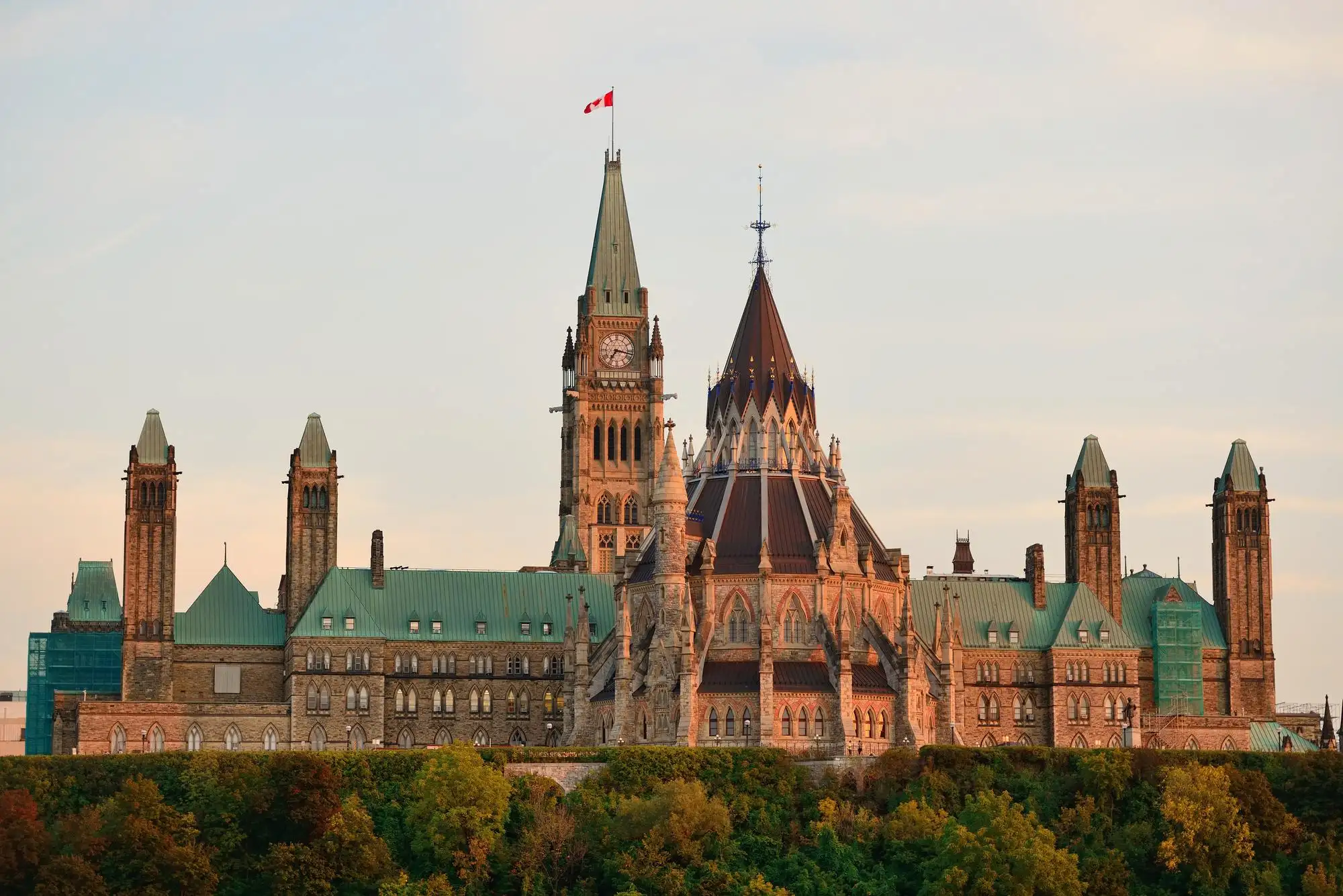The Canada Emergency Rent Subsidy (“CERS”) helps businesses pay for rent, property taxes, mortgage rent, and insurance for premises used to operate their business. The name of the subsidy is a bit deceiving. It’s more than just a rent subsidy. It also helps business owners who own their property by subsidizing mortgage interest, property taxes and insurance.
How much CERS you get is based on the revenue decline for the current reference period for the qualifying period. The CERS is available for the following periods:
| Period | Effective Dates | Current Reference Period |
| 8 | September 27, 2020 to October 24, 2020 | October 2020 |
| 9 | October 25, 2020 to November 21, 2020 | November 2020 |
| 10 | November 22, 2020 to December 19, 2020 | December 2020 |
| 11 | December 20, 2020 to January 16, 2021 | January 2021 |
| 12 | January 17, 2021 to February 13, 2021 | February 2021 |
| 13 | February 14, 2021 to March 13, 2021 | March 2021 |
In the 2020 Fall economic update, the CERS is until March 12, 2021. It could be extended beyond March 12, 2021, by regulations.
In this commentary, we will first look at how to calculate the CERS. We will then dive deeper into the different components that make up the CERS subsidy calculation.
Part I: Calculating the CERS Subsidy
The CERS has two components. CERS is a sum of A + B.
A represents the Base Rent Subsidy, and B represents the Top-Up Rent Subsidy (in situations where the qualifying property was subject to a public health restriction or “lockdown support”).
The Base Rent Subsidy
The Base Rent Subsidy is determined by the formula C x D.
C is the qualifying renter’s rent subsidy percentage for the qualifying period
D is the lesser of
- Total of all of the qualifying renter’s qualifying rent expense for a qualifying property for the qualifying period;
- $300,000 (shared among a group of affiliated entities).
An eligible entity can claim the CERS for multiple qualifying properties. So, first, you would sum up the qualifying rent expense for each qualifying property/
The Top-Up Rent Subsidy (Lockdown support)
The top-up rent subsidy is determined by the formulaF x G.
F is
(i) nil, unless the rent subsidy percentage for the qualifying period is greater than 0%, and
(ii) in any other case, the qualifying renter’s rent top-up percentage in respect of the qualifying property for the qualifying period.
G is the qualifying rent expense of the qualifying renter for the qualifying property for the qualifying period.
Note that the top-up rent subsidy is not subject to the $300,000 affiliated group limit.
Sharing the $300,000 Limit Amongst Affiliated Persons
A group of affiliated entities can only claim up to $300,000 in qualifying rent expenses as a group for a qualifying period. Suppose more than one entity in an affiliated group applies for the rent subsidy. In that case, each entity must file an agreement with their application to allocate a percentage of the $300,000 limit. This applies only to the base rent subsidy. The legislation does not seem to use the $300,000 restriction to the top-up rent subsidy.
Part II: Dissecting the Different Components of the Rent Subsidy Calculation
Eligible Entity
An “eligible entity” means
(a) a corporation or a trust, other than a corporation or a trust that is exempt from tax or is a public institution;
(b) an individual other than a trust;
(c) a registered charity, other than a public institution;
(d) a person that is exempt from tax under Part I because of paragraph 149(1)(e), (j), (k) or (l), other than a public institution (i.e., agricultural organization, a board of trade or a chamber of commerce, NPOs, and labour organizations);
(e) a partnership, all of the members of which are described in this paragraph or any of paragraphs (a) to (d). This could include partnerships with corporations as partners or other partnerships as partners, which in turn have corporations as its partners.
Qualifying Renter
A “qualifying renter” for a qualifying period, means an eligible entity that meets the following conditions:
(a) it applies for the qualifying period no later than 180 days after the end of the qualifying period;
(b) the individual who has principal responsibility for the financial activities of the eligible entity attests that the application is complete and accurate in all material respects; and
(c) it meets any of the following conditions:
(i) have a payroll account as of March 15, 2020 or have been using a payroll service provider;
(ii) it had a business number on September 27, 2020 and provides records and other information satisfactory to the CRA in support of its application, or
(iii) meet other conditions that may be prescribed in the future.
Rent Subsidy Percentage
Rent subsidy percentage is determined based on an eligible entity’s Revenue Reduction Percentage.
| Revenue Reduction Percentage | Rent Subsidy Percentage |
| 70% and over | 65% |
| 50% to 69% | 40% + (revenue drop – 50%) x 1.25 (e.g., 40% + (60% revenue drop – 50%) x 1.25 = 52.5% subsidy rate) |
| 1% to 49% | Revenue drop x 0.8 (e.g., 25% revenue drop x 0.8 = 20% subsidy rate) |
According to the 2020 Fall Economic Update, these rates are in place until Period 13, February 14, 2021 to March 13, 2021.
Revenue Reduction Percentage
The revenue reduction percentage is used to compute both the CERS and the CEWS. The revenue decline percentage is the revenue decline by comparing the qualifying revenue for the current reference period to the qualifying revenue for the prior reference period for the qualifying period.
Suppose a lower revenue reduction percentage is determined for a particular qualifying period than for the immediately preceding qualifying period. In that case, the revenue reduction percentage for the particular qualifying period is deemed to be equal to its revenue reduction percentage for the immediately preceding qualifying period. Therefore, if the September 2020 revenue reduction percentage was lower than the October 2020 revenue reduction percentage, you can use the September 2020 revenue reduction percentage to compute CERS.
Qualifying Property
Only qualifying rent expense for a qualifying property qualifies for the CERS.
Qualifying property means real or immovable property in Canada used by the eligible entity in the course of its ordinary activities. It excludes property used for a residence (house or cottage), including land that can reasonably be regarded as contributing to the property’s use and enjoyment as a residence.
If a home is used for personal and business, it appears that the home should not qualify as a qualifying property. Even if one part of the home is used for business, and another part is used for personal living, the property should not qualify. This is because the rules deny the CERS to properties that are a part of a self-contained domestic establishment used for personal living. Therefore, a home office should not qualify as qualifying property.
Qualifying Rent Expense
Conditions
Before we discuss what are qualifying rent expenses, we need to understand some restrictions:
- A qualifying rent expense must be in respect of a qualifying property (i.e., used for business).
- For each qualifying period, the qualifying rent expense is capped at $75,000 for each qualifying property (i.e., each location gets a $75,000 limit).
- The total of all qualifying rent expense for all qualifying properties cannot exceed $300,000 (which is shared and apportioned among a group of affiliated entities).
- The expenses must be paid under a written agreement entered into before October 9, 2020. If the written agreement was after October 9, 2020, then it must be pursuant to the renewal (on substantially similar terms) or assignment of a written agreement entered into before October 9, 2020. The government doesn’t want a retroactive artificial increase in rents to take advantage of the subsidy.
- The amount must be paid in respect of the qualifying period. The use of the word in respect of suggests that the amounts do not need to be paid in the qualifying period. It could be paid before or after, as long as the expenses relate to the qualifying period. However, there seems to be a time limit (see point below).
- An amount is deemed to have been paid by an eligible entity on the date it first became due under an agreement, and not at a later date if the entity attests that it intends to pay the amount due under the agreement no later than 60 days after the day on which the CRA makes the subsidy payment. This was added by the 2020 Fall Economic Update. The government doesn’t want tenants to prolong rent payments in situations when they receive the subsidy. The government wants the subsidy to be used to cover rent.
- The eligible entity must pay the amount to an arm’s length party.
Qualifying Expenses
| Type of Property | Eligible Expenses |
| Rented Properties (Rent for the use of the qualifying property) | This includes: gross rentrent based on a percentage of sales, profit or a similar criterionamounts required to be paid under a net lease as: (I) base rent, (II) regular instalments of operating expenses, such as insurance, utilities and common area maintenance expenses, customarily charged to the lessee under a net lease, (III) property and similar taxes, including school and municipal taxes, (IV) regular instalments of other amounts payable to the lessor for services ancillary to the rental of real or immovable properties and customarily supplied or rendered in connection with the rental of real or immovable properties. |
| Owned Properties In the case of qualifying property owned by the eligible entity that is not used by the eligible entity primarily (>50%) to earn rental income, or If the qualifying property is used primarily (>50%) by the eligible entity to earn rental income directly or indirectly from a non-arm’s length person, that is not used by that person primarily to earn rental income. The second rule allows holding companies that rent out a property to operating companies to be used for business to qualify for CERS on property taxes, mortgage interest, and insurance | For owned properties used in a business, eligible expenses include: Mortgage interest, if there is a mortgage on the qualifying property, Insurance for the qualifying property, and property and similar taxes on the qualifying property, including school and municipal taxes |
The word primarily means mainly. It appears that if the property is mostly used for business (and not as a rental property), then the eligible entity can claim CERS on property taxes, mortgage interest, and insurance. The legislation does not force you to prorate the expenses between business vs. non-business.
Any sublease rent expenses reduce qualifying expenses.
Excluded Amounts
The following are excluded from qualifying rent expenses:
- sales taxes,
- amounts paid as, on account of, in lieu of payment of or in satisfaction of, damages,
- amounts paid under a guarantee, security or similar indemnity or covenant,
- payments arising due to default under the agreement by the eligible entity,
- interest and penalties on unpaid amounts,
- fees payable for discrete items or special services, and
- reconciliation adjustment payments
Rent Top-Up Percentage (Lockdown Support)
The rent top-up percentage is used to compute the top-up rent subsidy. It is meant to help businesses in lockdown. Rent top-up percentage for a qualifying period is determined by the following formula:
A x B/C
A is 25%
B is the number of days in the qualifying period throughout which the qualifying property is subject to a public health restriction, and
C is the number of days in the qualifying period.
Public Health Restriction
This is meant to help businesses that are forced to stop some or all of their activities at a qualifying property by government order for at least one week (lockdowns). The restricted activities must be on the type of activity rather than the extent to which the activity may be performed or limits on when that activity may be performed (i.e., not past a certain time). Also, the restricted activity must be at least 25% of the revenues of the eligible entity for the prior reference period.
A public health restriction in respect of a qualifying property of an eligible entity for a qualifying period, means an order or decision in respect of which the following conditions are met:
(a) it is made under a law of Canada or a province, or the authority granted under such a law;
(b) it is made in response to the coronavirus disease 2019 (COVID-19) pandemic;
(c) it is limited in scope based on one or more factors, such as
(i) defined geographical boundaries,
(ii) type of business or other activity, or
(iii) risks associated with a particular location;
(d) non-compliance with the order or decision is a federal or provincial offence or can result in the imposition of an administrative monetary penalty or other sanction by the Government of Canada or a province;
(e) it does not result from a violation by the eligible entity of an order or decision that meets the conditions in paragraphs (a) to (d);
(f) as a result of the order or decision, some or all of the activities of the eligible entity at, or in connection with, the qualifying property (that it is reasonable to expect the eligible entity would, absent the order or decision, otherwise have engaged in) are required to cease (referred to in this definition as the “restricted activities”) based, for greater certainty, on the type of activity rather than the extent to which an activity may be performed or limits placed on the time during which an activity may be performed;
(g) it is reasonable to conclude that at least approximately 25% of the qualifying revenues of the eligible entity for the prior reference period that were earned from, or in connection with, the qualifying property were derived from the restricted activities; and
(h) the restricted activities are required to cease for a period of at least one week.
Examples of Who Qualifies for Lockdown Support
According to the department of finance, the following are Public Health Restrictions:
- Restrictions on indoor dining: a restaurant that normally earns approximately 25% or more of its revenues in connection with indoor dining could qualify due to its dining room being shut down even if it shifts its activities to take-out orders to make up some of the lost revenues from indoor dining.
- Closure of bars: a bar that is ordered to close down due to a regional public health restriction, and, anticipating low demand for take-out, does not continue operating, could qualify.
- Closure of fitness centres: a fitness center providing group fitness classes that is ordered to close down could qualify, even if, for instance, it moves to online instruction.
- Closure of retail stores: a retail store that is ordered to close down its location in a shopping mall, but that continues to operate providing online sales and curbside pick-up, could qualify so long as its in-store sales normally accounted for at least approximately 25 per cent of its revenues.
- Restrictions on types of personal services: an esthetics studio that earned most of its pre-pandemic revenues from services that cannot be performed while wearing a mask and can no longer be provided due to a public health restriction, could qualify.
- Other closures of certain indoor activities: a theater or an interactive museum that is ordered to close down would qualify.
- Closure in relation to a COVID-19 outbreak on the premises: a soup kitchen that is ordered to close down due to a specific public health restriction arising from a number of its employees contracting COVID-19 would qualify.
The following do not qualify as Public Health Restrictions:
- Reduction in business hours: a bar that is subject to a restriction requiring bars in a region to shut down by 10:00 pm each day would not qualify, as their activities would not be required to cease for a period of at least one week.
- Requirements for physical distancing: a restaurant that earns most of its revenues in connection with indoor dining would not qualify due to a public health restriction limiting patrons to six persons per table, as it could continue to carry on its indoor dining activities.
- Restrictions on travel: a bed and breakfast that sees a decrease in the number of clients due to travel restrictions would not qualify as it can continue to operate, and there is no order to cease its activities.
- Reduction in the number of clients at any one time: a movie theater that is required to limit the number of clients would not qualify, as it would not be required to cease any of its activities.
- Violation of a public health order: a factory that is required to close down due to violating a public health restriction would not qualify because the shut-down resulted from a contravention of public health orders.
Registering for the CERS (ZA) Number
You must create a CERS number before you apply. Sign into your CRA My Business Account and look for Create a CERS number.
Feel free to reach out to an LRK Tax team member to learn more on how we can help.


